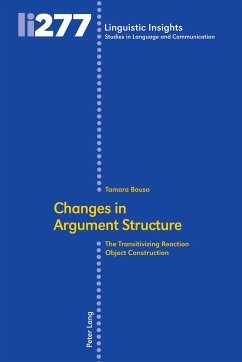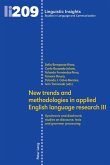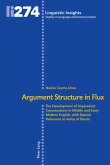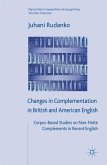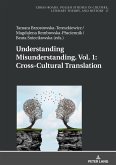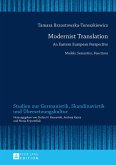This book deals with the characterization and history of the reaction object construction (ROC), as in Pauline smiled her thanks. The ROC consists of an intransitive verb followed by a nonprototypical object that expresses a reaction such that the whole syntactic unit acquires the extended meaning "express X by V-ing" (e.g. "Pauline expressed her thanks by smiling"). The hypothesis is put forward that ROCs follow a similar pathway as other valency-increasing constructions such as the cognate object construction and the way-construction, occurring first with more transitive-like verbs and then expanding to intransitives. Historical corpus evidence from several complementary data sources confirms this idea and reveals striking parallelisms with the way-construction.
"This is an unusually clear and empirically rich study which uses an overlooked construction in English to explore a broader development in the grammar and to engage with current trends in theoretical linguistics." Olaf Mikkelsen (University of Paris 8) in Nexus-AEDEAN 22/2 (2022): 88.
"This is a thought-provoking and empirically rich study, which sheds new light on an overlooked construction and its history. One gets the sense that few stones have been left unturned in Bouso's work on the ROC. The review of the existing literature on the construction is very comprehensive, and the book contains more than 450 numbered examples in total, so it may be used both as a bibliography of earlier work and a handy data source for other scholars interested in the ROC. [...] One very attractive aspect of the book is that it paves the way for future studies in numerous respects." Sune Gregersen (Department of Nordic Studies and Linguistics, U. de Copenhagen) in Research in Corpus Linguistics 10/1 (2022): 197-201.
"The monograph 'Changes in Argument Structure' is a well-documented, rigorous study that will be enjoyed by both experts and novice researchers interested in the history of the English reaction object construction. The strengths of the book are the originality of an uncharted area in historical linguistics, the exploration and comparison of the development of the ROC in two varieties of English, namely British and American, the parallelism between the ROC and other constructions of the English language, such as the way-construction, and the use of a complex methodological perspective (e.g. collexeme analysis as well as several statistical tests)." Andreea Rosca (Universitat de València) in Miscelánea: A Journal of English and American Studies 69 (2024): 245-248.
"The study clearly achieves its goal of providing a meticulous and convincing application of by now rather standard concepts in Construction Grammar to a particular, to-date unexplored phenomenon. (...)". It "constitutes a great contribution to the growing body of (diachronic) Construction Grammar, and a model illustration of how constructionist thinking can be used for the characterisation and tracking of peculiar but thought provoking linguistic patterns." Eva Zehentner (University of Zurich) in English Language and Linguistics (2025): 1-7; Published online by Cambridge University Press.
"This is an unusually clear and empirically rich study which uses an overlooked construction in English to explore a broader development in the grammar and to engage with current trends in theoretical linguistics." Olaf Mikkelsen (University of Paris 8) in Nexus-AEDEAN 22/2 (2022): 88.
"This is a thought-provoking and empirically rich study, which sheds new light on an overlooked construction and its history. One gets the sense that few stones have been left unturned in Bouso's work on the ROC. The review of the existing literature on the construction is very comprehensive, and the book contains more than 450 numbered examples in total, so it may be used both as a bibliography of earlier work and a handy data source for other scholars interested in the ROC. [...] One very attractive aspect of the book is that it paves the way for future studies in numerous respects." Sune Gregersen (Department of Nordic Studies and Linguistics, U. de Copenhagen) in Research in Corpus Linguistics 10/1 (2022): 197-201.
"The monograph 'Changes in Argument Structure' is a well-documented, rigorous study that will be enjoyed by both experts and novice researchers interested in the history of the English reaction object construction. The strengths of the book are the originality of an uncharted area in historical linguistics, the exploration and comparison of the development of the ROC in two varieties of English, namely British and American, the parallelism between the ROC and other constructions of the English language, such as the way-construction, and the use of a complex methodological perspective (e.g. collexeme analysis as well as several statistical tests)." Andreea Rosca (Universitat de València) in Miscelánea: A Journal of English and American Studies 69 (2024): 245-248.
"The study clearly achieves its goal of providing a meticulous and convincing application of by now rather standard concepts in Construction Grammar to a particular, to-date unexplored phenomenon. (...)". It "constitutes a great contribution to the growing body of (diachronic) Construction Grammar, and a model illustration of how constructionist thinking can be used for the characterisation and tracking of peculiar but thought provoking linguistic patterns." Eva Zehentner (University of Zurich) in English Language and Linguistics (2025): 1-7; Published online by Cambridge University Press.

